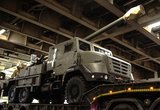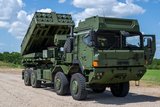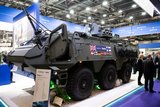US Army to test StrikeShield APS
The US Army is to test the StrikeShield Active Protection System under an $11 million contract awarded to Rheinmetall Protection Systems and Unified Business Technologies (UBT).
The army’s recently formed Vehicle Protective Systems programme office will evaluate StrikeShield as part of a larger effort to characterise APS performance against a wide variety of anti-armour threats. The army will carry out extensive live fire testing of the StrikeShield system over several months from October 2020.
The aim of the testing is to gather performance data that can inform future selection of APS technologies best suited for platforms such as the future Armored Multi-Purpose Vehicle, Mobile Protected Firepower or Optionally-Manned Fighting Vehicle.
StrikeShield is a distributed, real time system which was developed to protect the carrying platform against anti-tank rockets and missiles.
Stefan Haase, Rheinmetall’s head of the product unit Active Protection, said: ‘We are excited to enter into a new phase of partnership with the army that will enable the army to carry out extensive tests of the StrikeShield APS system. We are confident the system will perform very well in the testing and that possibilities for fielding the technology on army vehicle systems will arise.’
Related Equipment in Defence Insight
More from Land Warfare
-
![Lockheed Martin to look further afield for GMARS rocket system opportunities]()
Lockheed Martin to look further afield for GMARS rocket system opportunities
The HX truck is already in use in many NATO and allied countries around the world as a logistics vehicle and carrier for high-value systems, including missile firing weapons, so its use for the Global Mobile Artillery Rocket System makes logistical sense.
-
Medium knocked out of British Army LMP, with CAVS as heavyweight champion
As the British Army seeks to modernise and consolidate its diverse vehicle fleet, yet another change in direction is underway.
-
![Energy evolution: How laser defence systems are powering the next phase of air defence (podcast)]()
Energy evolution: How laser defence systems are powering the next phase of air defence (podcast)
Laser-based air defence is moving from promise to deployment as global threats evolve. In this special podcast, we explore how high-energy laser systems are reshaping interception strategies.
























